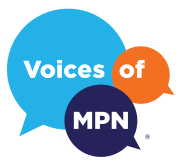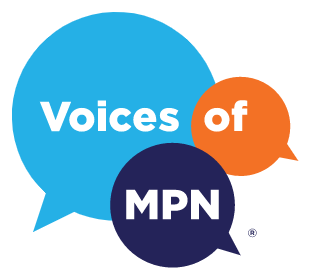


Glossary Of Terms
Anemia A low red blood cell count. Anemia can be associated with certain symptoms that are important to monitor, such as fatigue and shortness of breath. Being anemic can make you feel weak, due to the decreased number of red blood cells that carry oxygen from your lungs throughout your body.
Apheresis A procedure that involves collecting blood from a person, removing part of the blood such as platelets or white blood cells, and then returning the rest of the blood to that person.
Blood cancer A type of cancer that starts in the bone marrow or in cells of the immune system.
Blood clot A mass of blood that forms when blood platelets, proteins, and cells stick together.
Blood smear A blood sample that is viewed on a slide under a microscope to count and examine the different types of cells it contains.
Blood transfusion A procedure where parts of blood or whole blood is put into a person’s bloodstream through a vein.
Bone marrow A spongy tissue found inside certain bones in the body (eg, hip and thigh bones) and where blood cells are primarily made.
Bone marrow aspiration Your Healthcare Professional removes a small amount of your liquid bone marrow through a needle and examines it under a microscope, looking for abnormal cells.
Bone marrow biopsy Your Healthcare Professional takes a sample of solid bone marrow tissue (usually from the hip bone) through a needle for examination under a microscope.
Chronic disease A disease or condition that usually lasts for 3 months or longer and may get worse over time. Chronic diseases tend to occur in older adults and can usually be controlled but not cured.
Complete blood count (CBC) This test measures the number of cells in your blood, including the number of red blood cells, white blood cells, and platelets. Hemoglobin and hematocrit are also measured by this test.
CT (CAT) scan A computer connected to an x-ray machine that takes a series of pictures of areas inside the body to create a 3-dimensional image of tissues and organs. This image can help healthcare professionals diagnose diseases, and make care management decisions.
Cytokines Proteins in the body that can cause inflammation. When your body has too many of these cytokines, you may experience itching, night sweats, and some other symptoms.
Deep vein thrombosis (DVT) Development of a blood clot in a deep vein of the lower body, usually in the legs. DVT may cause symptoms including pain, swelling, warmth, and redness in the affected area.
Early satiety Feeling full early on when you haven’t eaten or have eaten very little.
Erythropoietin (EPO) A hormone that stimulates bone marrow to produce new red blood cells.
Essential thrombocythemia (ET) A rare, chronic blood cancer in which a person’s bone marrow makes too many blood platelets (also known as thrombocytes).
Fibrosis Occurs when connective tissue thickens and scars. Fibrosis in the bone marrow may be associated with myelofibrosis.
Gene A piece of DNA that contains the information for making a specific protein.
Gene mutation Any change to the sequence of DNA in a gene. Some mutations have no effect, while others can be harmful and lead to cancer or other diseases.
Genetic testing Special tests that can help identify whether you have certain genetic mutations that may be associated with myeloproliferative neoplasms (MPNs).
Heart attack Occurs when one or more arteries in the heart become blocked with a blood clot in an area narrowed by buildup of cholesterol and fat. The clot blocks the flow of blood through the artery to the heart muscle, keeping it from receiving oxygen and nutrients.
Hematocrit A measure of the volume of red blood cells in the blood which is stated as a percentage.
Hematologist A doctor who has been specially trained to diagnose and treat diseases and cancers of the blood.
Hemoglobin The iron-rich protein in red blood cells that carries oxygen.
JAK2 (Janus-associated kinase 2) gene A gene that makes a protein called JAK2, which helps control the number of blood cells made in the bone marrow. About 95% of people with polycythemia vera (PV) have a specific mutation, or change, in the JAK2 gene.
MPN-10 A measurement tool used by Healthcare Professionals to assess and track a group of 10 MPN symptoms, including fatigue, filling up quickly when you eat (early satiety), abdominal discomfort, inactivity, concentration problems, night sweats, itching (pruritus), bone pain (diffuse, not joint pain or arthritis), fever, and unintentional weight loss. The severity of these symptoms are measured using a scale that ranges from 1 (no symptoms) to 10 (worst imaginable) to help determine how an MPN is affecting the person’s life and to help guide care management decisions. This tool allows people with MPNs to track their symptoms and monitor how they are feeling over time so they can discuss their results with their Healthcare Professionals.
MPN disease progression Describes an MPN that is worsening. Lab tests and other measures may help to identify MPN disease progression.
MPN disease transformation Disease transformation occurs when one disease develops into another one. For example, PV and ET have the potential to transform into MF over time. This is different from disease progression, where the disease gets worse over time but does not change into another condition.
MPN specialist a Healthcare Professional who has experience in and specializes in treating MPNs.
Mutation Any change to the sequence of DNA in a gene. In people with MPNs, mutations may cause the bone marrow to make the wrong number of blood cells.
Myelofibrosis (MF) Myelofibrosis is a rare, chronic blood cancer that is part of a group of diseases called myeloproliferative neoplasms, or MPNs. People with MF have a defect in their bone marrow that results in an abnormal production of blood cells, causing scar tissue to form. MF can result from a transformation of other bone marrow diseases or it can occur on its own. When it occurs on its own, this is known as primary myelofibrosis.
Myeloproliferative neoplasm (MPN) Myeloproliferative neoplasms, or MPNs, are a group of rare, chronic blood cancers in which a person’s bone marrow does not function properly. The most common Philadelphia chromosome–negative MPNs are PV, ET, and MF.
Oncologist A doctor who has been specially trained to diagnose and treat cancer.
Philadelphia chromosome MPNs can be classified based on the presence or absence of a chromosomal abnormality called the Philadelphia chromosome. There are several types of Philadelphia chromosome–negative MPNs, which include polycythemia vera, myelofibrosis, and essential thrombocythemia.
Phlebotomy A procedure similar to blood donation in which blood is removed from the body. Phlebotomy is commonly used in people with PV to help lower red blood cell count.
Platelets A type of blood cell that helps form blood clots to slow or stop bleeding and help heal wounds. Platelets are also called thrombocytes.
Polycythemia vera (PV) PV is a rare, chronic blood cancer in which the bone marrow produces too many red blood cells. Patients with PV may also have too many white blood cells and platelets (blood clotting cells) in their blood, but having too many red blood cells causes most of the problems associated with PV. PV is part of a group of diseases called myeloproliferative neoplasms, or MPNs.
Prognosis The likely outcome or course of a disease, including whether or not the disease will get better or worse.
Pruritus Itching; this symptom can be mild, moderate or severe, and can occur in people with MPNs.
Red blood cells A type of blood cell, also called erythrocytes, which are made in the bone marrow and carry oxygen from the lungs to all parts of the body.
Spleen An organ that is located under your ribs on the left side of your upper abdomen. The spleen helps the body fight infection and filters out and destroys old or damaged blood cells. It also stores red blood cells and platelets.
Splenomegaly In people with PV, MF, or ET, the spleen may become enlarged—a condition called splenomegaly. When the spleen becomes large, it can crowd the stomach causing early satiety (filling up quickly when eating) and abdominal discomfort.
Stroke Damage to brain tissue that occurs rapidly due to reduced blood flow to the brain. This may be caused by a blockage in a blood vessel or by bleeding. Symptoms of a stroke include dizziness, numbness, weakness on one side of the body, and problems with talking.
Tracking The act of monitoring and logging various aspects of your condition. This is an important way for patients with MPNs to "keep track" of their condition. Regularly tracking your MPN may help you discover important insights that can help you and your Healthcare Professional better understand the state of your condition—and ensure that you are receiving appropriate care.
Transient ischemic attack (TIA) A blockage in the flow of blood to the brain that is temporary and generally lasts a number of minutes. A TIA may cause dizziness, blindness in one eye or double vision, numbness on one side of the body, and other symptoms of a stroke.
White blood cells Also called leukocytes, these are a type of blood cell located in the blood and lymph tissue that are part of the immune system. They help fight infection and other diseases.




